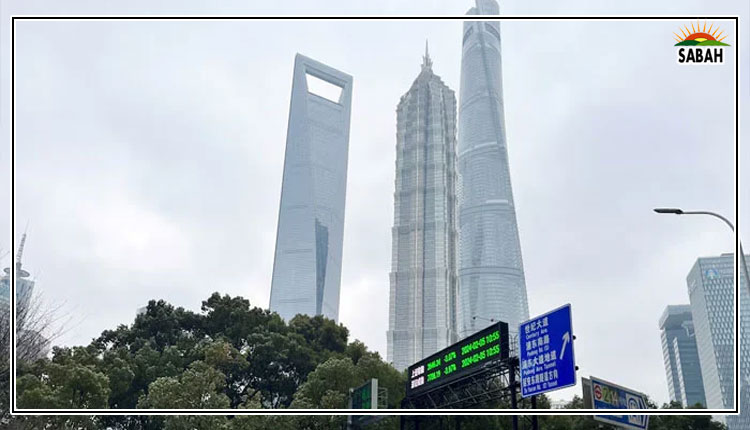We are not high enough…Javaria Nisar
Looking straight up, trying to observe the height of the worlds second tallest building, my neck almost twisted backwards. I was standing next to the Shanghai Tower, an engineering jewel and an utter spectacle to behold.
One cant help but feel awestruck by the elegant design and magnificence of its structure. The skyscraper is more than 2,000 feet tall, second only to Dubais Burj Khalifa. But when it comes to tall buildings in China, the Shanghai Tower is surely the tallest but not the only tall building in the country.
One of the many engineering feats accomplished by China in the realm of urban planning over the years includes its near-absolute dependence on high-rise buildings (especially in the eastern part) to accommodate larger populations within lesser landmass. In fact, some might even argue that Beijing has not only outclassed but also outdone the whole concept of vertical expansion by building too many skyscrapers.
Still, this is the hallmark of Chinas development strategy. It builds tall buildings to ensure it does not run short on land. After all, we are talking about a country that until recently was the largest in the world in terms of population size.
But China is not alone in this regard. Developed countries in general have shed horizontal expansion for vertical growth. Metropolitans globally are decorated with skyscrapers. New York, Tokyo, and several other cities in the world are lined with skyscrapers hosting not only commercial offices but also residential apartments. After all, tall buildings do well to manage large populations on small lands.
Urban planning is a concept unbeknownst to policymakers in Pakistan. Appetite for an efficient land usage policy is scarce and any craving for high-rise construction even less so. Our policymakers have contented themselves with a 500ft tall mall in Islamabad and buildings of similar size in other cities. As a result, our cities continue to take more space horizontally when they should be expanding vertically.
Take a look at the major cities of Pakistan Karachi and Lahore. Both continue to become uglier with each passing day. Unplanned urbanization and haphazard growth in slums are making the cities unlivable. And this is more or less true for every other city in Pakistan. Even Islamabad has its fair share of shabby sectors and slums.
Pakistan is increasingly land-stressed due to an ever-increasing population and an inclination to expand our cities horizontally. After all, land is finite, the population not so. Therefore, the reason to act rationally exists ever so. And vertical expansion is the only viable solution.
Pakistanis have a general proclivity for big houses and a dislike for living in apartments. Moreover, in the commercial realm, builders and real-estate owners are discouraged through regulatory regimes encompassing stringent NOCs (no objection certificates) that bar high-rise construction. Obviously, these are just a few of the hurdles.
Nonetheless, at the very least a two-pronged strategy is needed to address this problem and achieve high-rise construction in Pakistan.
First, a mass media campaign is needed to educate people on the importance of vertical expansion. It is important to dismiss the notion of prestige attached with owning a stand-alone (big) house. This culture will take time to develop as social change is a slow process, though not unachievable. Persistent inflation will also play a pivotal part in nurturing public inclination towards flats as affording houses becomes difficult.
Second, if you talk to any real-estate professional or builder, there is a common complaint of rent-seeking and hefty bribes that must be paid to obtain an NOC for construction. These NOCs are not just a precondition for building skyscrapers. In fact, a building as tall as a few hundred feet can also require multiple NOCs.
This problem can only be addressed by implementing uniform building control regulations across the country. The redundant NOC regimes must be done away with and replaced with robust compliance and monitoring systems. Moreover, the permissible height for buildings needs to be increased. Presently, building control regulations in the country discourage the construction of tall buildings on one pretext or the other.
There are many stakeholders in the government and the process for obtaining an NOC is extremely cumbersome, mentally exhausting and financially draining. Clearance is not only required from the building control authorities but also from other departments such as the Ministry of Defence and the Civil Aviation Authority. Thus, the builder is bullied and fleeced at every stage of the process.
But corruption is not the only hurdle. As mentioned earlier, there is a cultural mindset as well that hinders vertical growth. Apart from educating people, the government can also legislate to make high-rise construction more attractive in housing as well as commercial sectors by making it more cost-effective and efficient for builders and consumers. For example, by providing better facilities at high-rise apartments, the government can allure people through the promise of a high-quality life within city centres.
The Shanghai Tower is not just a tall building. It symbolizes Chinas growth trajectory in many ways, speaking volumes about the vision its policymakers carry for the growth of Chinese cities and the planning that goes into translating this vision into reality.
High buildings have become synonymous with high growth in these economically advanced countries. Pakistan also needs to learn from their experiences before it gets too high to handle.
Courtesy The News












